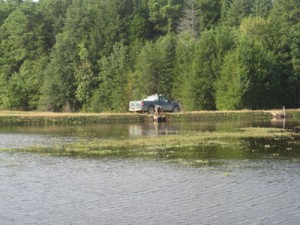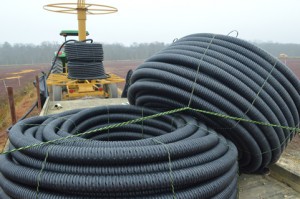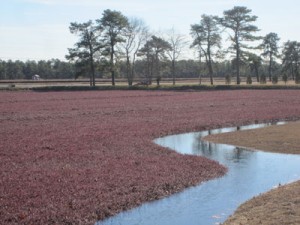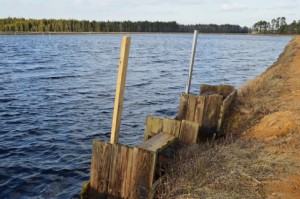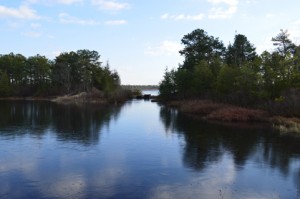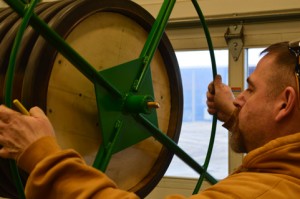Preparation for our winter projects has begun! Mostly, this means getting ready for the winter flood.
As we have discussed here before, drainage is a key element in Pine Island Cranberry’s water management program. In addition to having irrigation systems that reduce water usage, well-drained soil is necessary to keep a bog’s root system functional. Beds should be designed for adequate drainage, which is essential for good root development and aeration as well as prevention of conditions that can lead to the presence of Phytophthora, which causes fruit rot and root rot.
Under normal conditions, the temperature steadily drops post-harvest; it is important to wait until the vines go dormant before starting to put the water on. Once they freeze and aren’t covered with water, the roots can become exposed, and we need to cover them as fast as possible.
Flooding starts by letting in streams from the reservoirs to canals and bogs. Strategic board placement (more boards in the southernmost bogs to catch the water) will get the ditches high enough to start flooding from the bottom up. As the water level in the bogs begins to rise, our team begins adjusting the water level in the bogs by adding boards where they are needed. Once the vines are covered and the stream has settled, we adjust the level of the reservoirs to maintain the stream and keep the bogs flooded for the winter. Wells are shut down once bogs are flooded, and only turned on again if it is dry and reservoir levels are dropping.
In addition to water management, our shop team is busy winterizing facilities and equipment by clearing out gutters and downspouts to prevent ice build up, shutting off the water supply to outside faucets, and draining all exterior water lines where necessary. They are also making sure to top off fuel tanks and perform other routine maintenance tasks in order to keep everything running as efficiently as possible!

